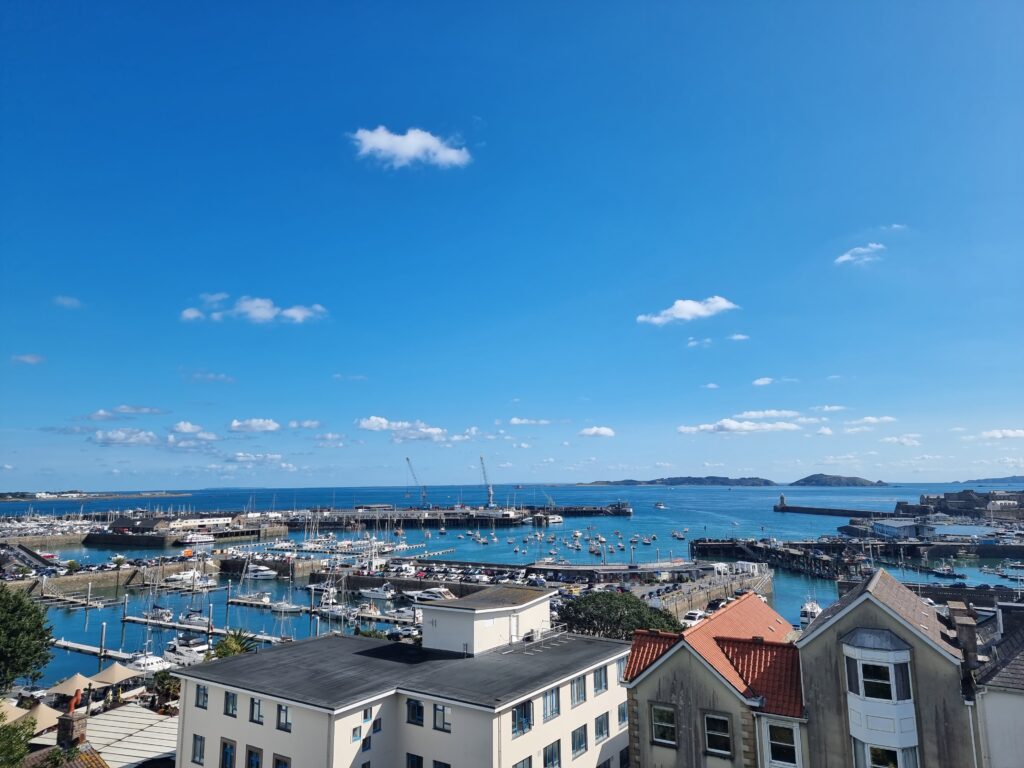
Last time we left Salcombe extraordinarily early in the morning and headed south.

It was Fi’s seventh channel crossing so we had some idea what to expect. This time it would be light winds to start and stronger winds and squalls with waves against tide later… something to look forward to. Plus it is the busiest shipping channel in the world, so Fi warmed up her “radio voice” in preparation for calling up the ships to ensure they were aware of our presence.


The ride into Guernsey got quite squally and bumpy as predicted. We were surprised by the number of tuna in the channel, several times seeing groups of them jumping out of the water and chasing fish.


Settled weather encouraged us to head to the nearby island of Sark. This was a momentous occasion as it completed our circumnavigation of… somewhere. We had last been to Sark after picking up the boat although we weren’t allowed ashore as it was covid times.





How long can one handle a rolling house. 2 days, 3 days? Sark was such an interesting place to visit. There are no cars, historic places, natural beauty, and a rolly anchorage. So after a couple of nights, we realised that the boat was feeling flatter than the land, so we’d better leave for a less rolly anchorage.


Around to the south side of Guernsey, we find a beautiful anchorage with a white sand beach. Oh, but its just as rolly. Fortunately, as the tide drops, the beach becomes a vast expanse of still, hard, flat – did I mention still – land. We enjoyed a few days on the beach as a respite to the rolly boat.


We’d read that during World War 2, Guernsey was occupied by the Nazis, which neither of us actually knew. Close by to this anchorage was the “Occupation Museum” detailing what life was like during this time, so for a nice day off the rolly boat we headed up there for a good walk, and a look at all the artefacts found on the island after the occupation ended. The allies landed in St Peter Port where we would later moor Away.
Completely sick of the rolling, we elected to motor around the corner and back to bustling St Peter Port for some more touring of historic sites.


We learnt about the German occupation of the Channel Islands during WW2 at the several museums housing war artifacts. The Germans heavily fortified the islands. Rather than retake them by force, the allies negotiated their surrender at the end of the war, almost a year after the D day landings a few miles away. Many relics remained on the islands and have found their way into the museums.
Next time we destroy the dock in St Peters Port and explain Newtonian physics to a nice yet cranky man in a mild gale.


